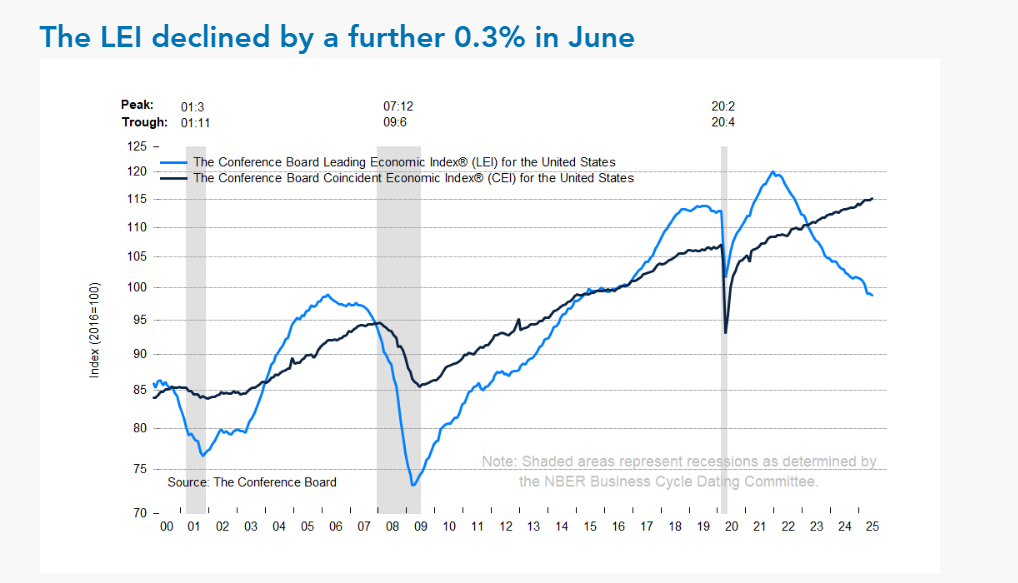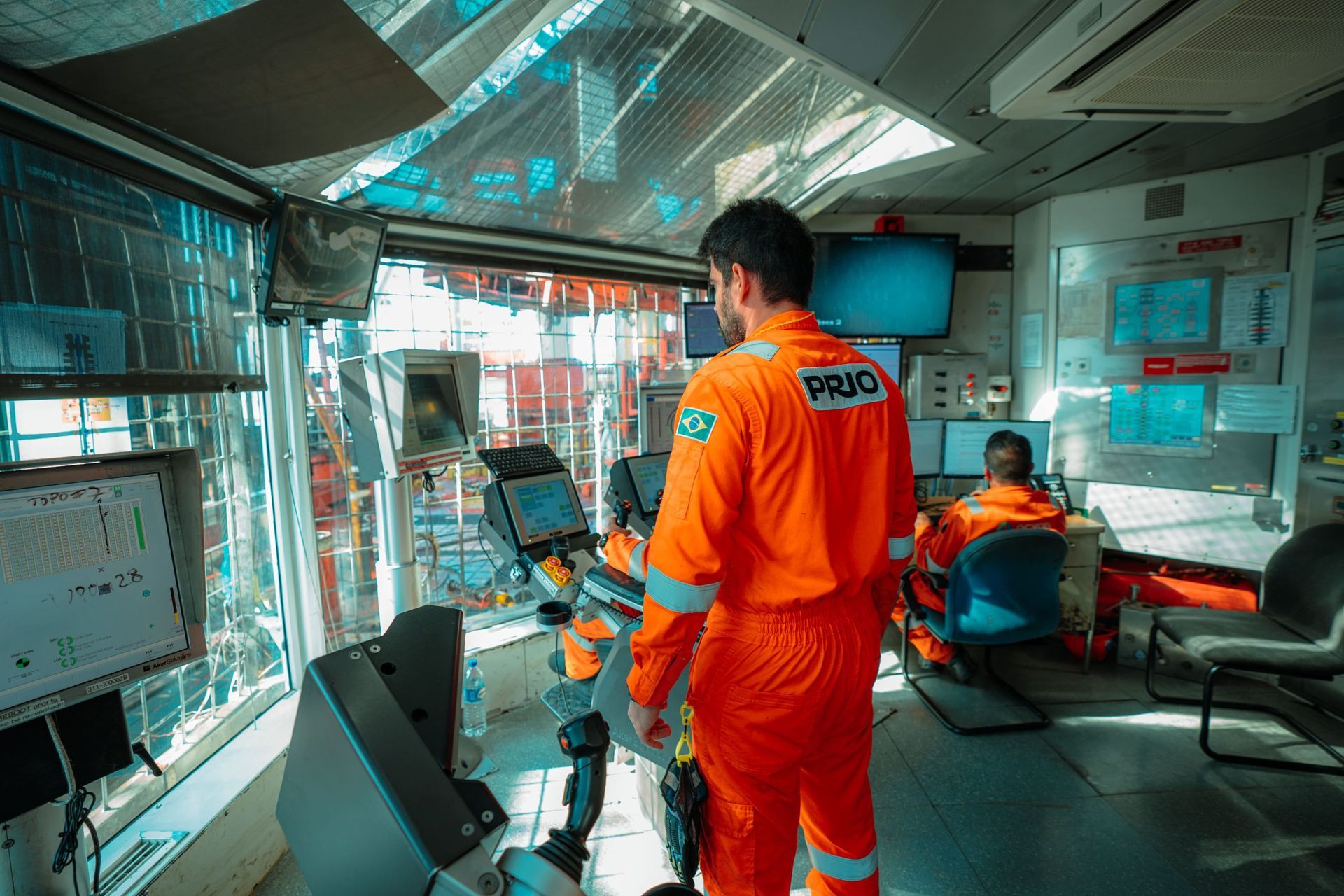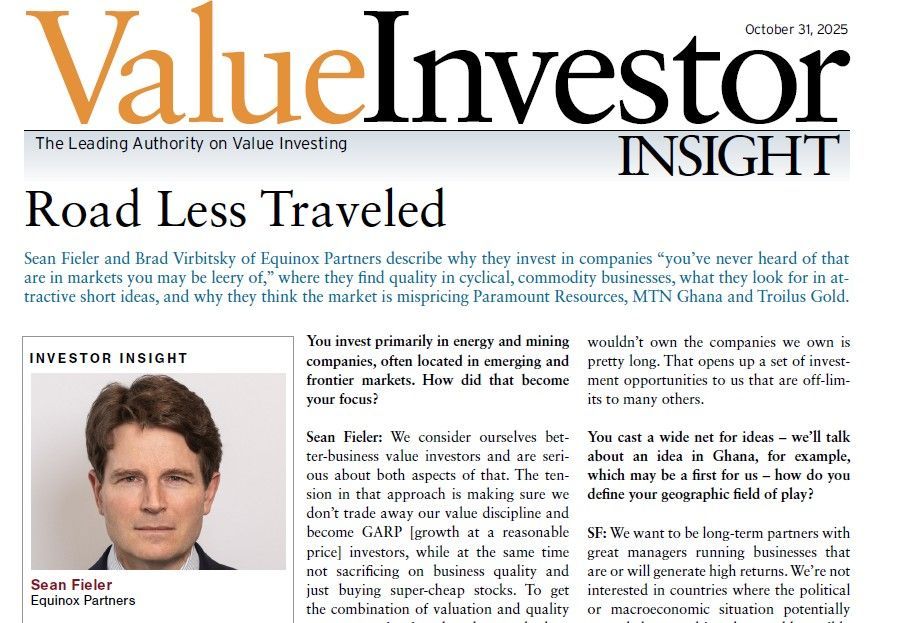Equinox Partners, L.P. - Q2 2014 Letter
Dear Partners and Friends,
PERFORMANCE & PORTFOLIO
Equinox Partners was up +9.8% in the second quarter of 2014 and +10.7% for the year to date through September 16.[1]
COMPANY AND COUNTRY
We don’t use the fractional ownership of businesses to express an opinion on a country’s macroeconomic or geopolitical trajectory. Rather, our focus is company specific once a modicum of economic and political stability is identified in a given market. This willingness to disentangle company and country analysis has produced a series of valuable insights and sizable, non-consensus investments over the years.
Indonesia
Our purchase of Indonesian companies shortly after the turn of the last century is a case in point. The combination of Indonesia’s frightening headlines and memories of the Asia Crisis had investors focused on the country’s macro risk. Jihadists were blowing up hotels, tourists, and embassies while East Timor and Aceh were seeking separation and autonomy respectively. The economic reality was not much better. Indonesia’s debt to GDP exceeded 100% with the IMF overseeing debt rollovers. The Indonesian stock market and rupiah had collapsed. In sum, it was easy to decide that company-specific work would be overwhelmed by Indonesia’s problems and, thus, not particularly relevant.
Though we studied both Indonesia’s history and current problems, it was our company-specific analysis that proved dispositive. Our meetings with Unilever Indonesia’s management, not Indonesian politicians or economists, changed the framework that we were using to analyze the Indonesian investment opportunity. Specifically, Unilever Indonesia’s ability to increase its tonnage in the teeth of the Asia Crisis gave us confidence that this business was going to continue to prosper unless Indonesia descended into chaos.
Our company-specific work not only laid the groundwork for buying branded-products companies in Indonesia, but it also gave us a more nuanced understanding of the growth drivers behind the Indonesian economy. Unilever Indonesia, along with Coca Cola and a few cigarette companies were among the small handful of businesses that truly had a national presence in Indonesia. Accordingly, they were serving the archipelago’s growing provinces, not just the depressed Jakarta metropolitan area. Understanding the divergent paths of the provinces and Jakarta gave us the right framework for understanding the Indonesian economy.
India
Although it may seem like a distant memory today, a year ago foreigners were aggressively selling their Indian holdings in reaction to Congress Party’s poorly conceived policies and creeping financial repression. We too were deeply concerned with the Manmohan Singh administration’s apparent contempt for the market and spent time in Delhi last summer meeting government ministers, lobbyists, and political analysts.
While we thought a modest economic adjustment was necessary, our political analysis varied only slightly with the consensus view. Specifically, we took heart in Raghuram Rajan’s appointment to the Reserve Bank of India and the underlying health of the economy. Our meetings within the finance ministry and with corporate executives reaffirmed the view that Manmohan Singh’s administration was in denial about the country’s problems and was willing to subjugate the market to government control rather than make a modest change in course. In sum, we expected India to muddle through, and we had no expectation that Narendra Modi would be the next prime minister.
Despite our lack of a distinctive macroeconomic insight, we noticed that a number of companies continued to grow in line with their average rate despite the political and macroeconomic environment being far from ideal. HDFC, for instance, grew their loan book 16% in 2013—just below their historical norm of 20%. In fact, even during the depths of the world financial crisis of 2008 and 2009, this company continued year-on-year loan growth at double-digit rates.[2] HDFC was just one of several companies able to compound growth at close to historical rates despite the dysfunction in Delhi. This dynamic and the discounted valuations—not a preternatural prediction of the BJP’s historic victory—gave us the confidence to invest in size a year ago.
Russia & China
We are actively researching companies doing business in and around China and Russia. These company meetings provide invaluable information that helps us properly weight and shade our ongoing macroeconomic and geopolitical analysis. Moreover, through this process we’ve discovered company-specific opportunities in businesses with exposure to these markets.
Specifically, we own a Peruvian Caterpillar dealer, Ferreycorp, which trades at six times next year’s estimated earnings on concerns that a China downturn will depress the copper price and its growth prospects. While the copper market is certainly dependent upon China, it is equally important to note that Peru is at the low end of the global cost curve. Accordingly, Peruvian copper projects would be amongst the last to be shuttered by a persistently low copper price.
It is also worth noting that the majority of Ferreycorp’s profit comes from service revenues on equipment in the field. Consequently, to deeply cut into Ferreycorp’s current earnings stream, a China slowdown would have to not only stop highly economic new projects, it would also have to shut down existing mines on the bottom half of the global cost curve. While this is a theoretical possibility, at six times next year’s estimated earnings, the market is discounting a China collapse, not just a China slowdown.
We also purchased a European-domiciled marketing services company with a dominant position in Russia after it declined nearly forty-percent earlier this year. The market is clearly concerned that this company’s business will begin to suffer under the weight of Western sanctions. We are already modeling a sanction- induced slowdown and we think that this dominant company will at least maintain their Russian business over the medium term. The business was resilient during the global financial crisis which hit Russia particularly hard, and while not immune, we don't foresee the business declining to the extent that the discounted valuation would indicate.
A key competitive position for this marketing services company is the high switching cost of its business; it also provides a measurable, high ROI for its customers at a marginal cost. The company requires virtually no capital to operate and its balance sheet is net cash. We project that a majority of the company’s business will come from outside of Russia in the next several years—something which is also being overlooked by a myopic market. Finally, the company has an experienced and highly competent Western management team that has proven to be excellent strategic and financial stewards over time.
While our indirect exposure to Russia and China is material, our direct exposure collectively stands at just 6%. On the one hand, the present macro and geopolitical consensus are probably obscuring valuable investments which our company-specific research should unearth. On the other hand, we continue to struggle with what passes for corporate governance in these two countries. The governance problems in China remain close to insoluble, and in Russia we are finding just a few well-managed and governed companies. Needless to say, governance is not an issue on which we are willing to compromise.
Conclusion
There is a compelling argument against every great investment idea. At the heart of our effort to achieve investment insights is our willingness to test these compelling but sometimes flawed arguments. In part, this process comes from our macro and political work. But, in large part, this process stems from our company-specific work which over the years has produced many of our best insights and investments.
Sincerely,
Andrew Ewert
Sean Fieler
Daniel Gittes
William W. Strong
END NOTES
[1] Returns stated for Equinox Partners, L.P. Returns will differ for Equinox Fund International, Ltd. September performance is a rough estimate based on intramonth information which is not yet finalized.
[2] Source: company financials.









